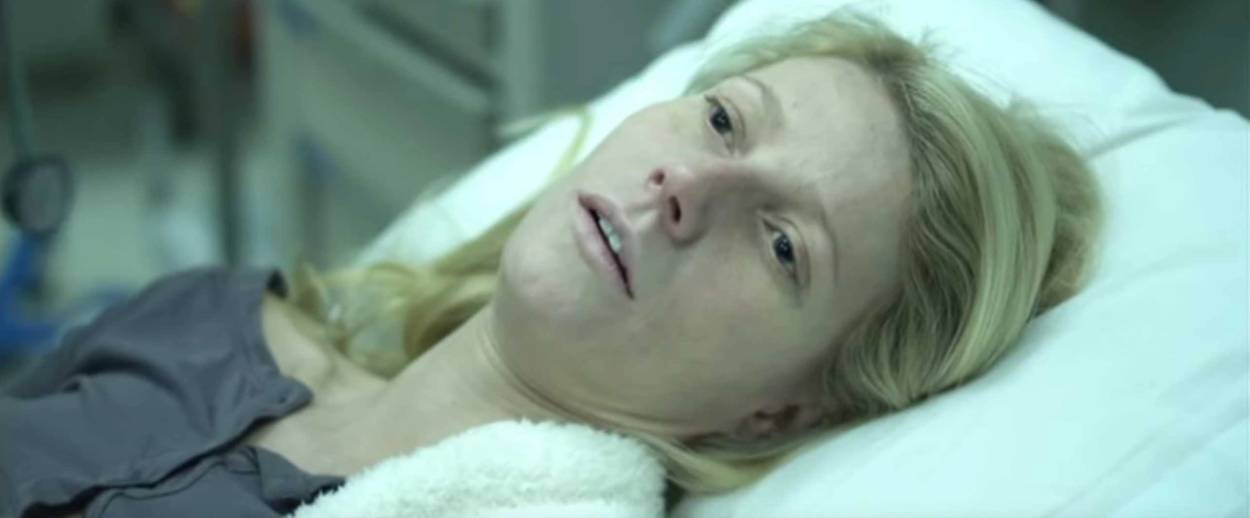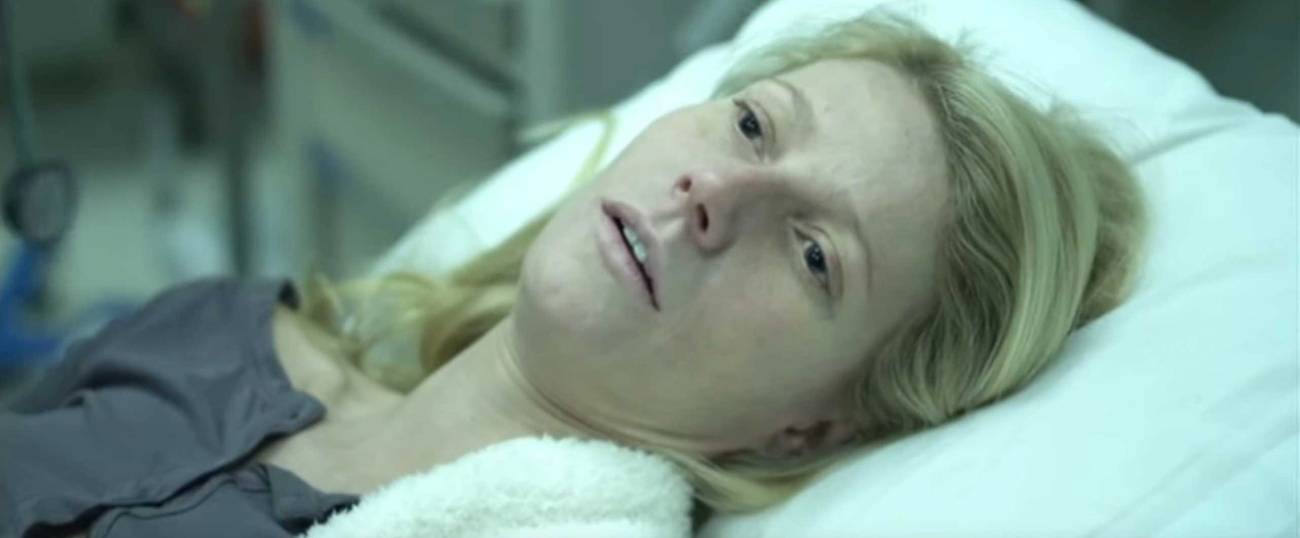Cinema and the Quarantine Year
What plague movies like ‘Contagion’ get wrong about our faith in others




George A. Romero’s Night of the Living Dead, came out on Oct. 1, 1968. It cost $114,000 to make, which meant that special effects were sweetly limited: Instead of fake blood, which is expensive, the crew used Bosco chocolate syrup, and one of the cast members, who owned a couple of butcher shops, donated some entrails to make the flesh-eating scenes look real. Most of the film was shot in a house scheduled for demolition, which meant that walls could be torn down and furniture shattered whenever the script called for it. Costumes were picked up at a local Goodwill.
None of this mattered to viewers. People attending early screenings were reported to remain silently in their seats, stunned. Some were weeping. All agreed that whatever it was that they were feeling, they weren’t accustomed to feeling it at the movies. The enlightened classes soon swooped in to explain all of these unbridled emotions, opining that Romero’s debut hit home because, really, it was an allegory for the Vietnam War. Or a canny explication of Freud’s ideas. Or a critique of racism in America.
All these theories are good, and all are missing the point. What made Night such a success—launching a torrent of zombie movies and helping to cement horror as the genre dedicated to exploring thorny questions that prestige dramas, say, rarely approach—were two foundational principles.
First, plagues happen because plagues happen. Why have the dead risen? Why do they crave the flesh of the living? What brought this pandemic on, and, more importantly, what might bring it to an end? A good zombie movie never tells. Night of the Living Dead does offer some fleeting, halfhearted excuse for an explanation—something about the Venus space probe—but it only makes the movie’s central mystery more profound. Like every great artist—or rabbi—Romero knows that much of existence lies just beyond the reach of frail human logic, and that cataclysms can never be explained by charting some simple sequence of cause and effect. So why is the apocalypse upon us? Go figure. Maybe it was some space thingy. Maybe it was our hubris. Maybe it was our latent desire for our mothers. Maybe it was our anxiety driving us to turn violent at the first hint of trouble. Maybe it was a punishment from God. Maybe it was all of the above. Whatever it was, the movie insists that we worry less about the why and more about the who, the what, and the where, about the humans suddenly entangled in circumstances they can’t control with only each other to lean on for safety and comfort. Which, if you think about it, is a pretty apt metaphor for all of human life.
The brute is loyal to his family and his neighbors. The more evolved creature understands that specific people here and there don’t matter; only humanity does.
Which brings us to the second principle: Every good outbreak movie is a story of us versus them. In Night, it’s the small and querulous band besieged in a dilapidated farmhouse, fighting off the hordes slow-walking outside. In Dawn of the Dead, Romero’s astonishing sequel, it’s a few living souls inside a shopping mall against the rest of the undead world. Survival quite literally depends on recognizing and protecting your boundaries, not just physical but emotional as well. That man out there begging you for mercy? He is no longer your husband. He’s been bit, and he has a minute, maybe two, before he turns ghoulish and begins to bite. If you want to live, you must shoot him in the head. Because once you’ve been infected, you’re no longer one of us. This distinction is the only difference, often, between life and death.
These twin tenets were the foundation for three decades of excellent filmmaking. But then something happened to America. Maybe it was too much economic inequality. Maybe it was too many people attending too much college. Maybe it was the Venus space probe. Whatever it was, two decades ago or thereabouts, the men atop Mount Hollywood planted their flag on its peak and committed themselves to a radically different vision of human life.
To see this ideology at play, just watch Steven Soderbergh’s Contagion, a 2011 ensemble drama about the rampant spread of a deadly virus. It’s the stuff of nightmares: A young and horrible businesswoman travels from Hong Kong to her home in Minneapolis, carrying with her the coronavirus’ evil twin. She is played by Gwyneth Paltrow, and by the time hair and makeup had made her look reliably unradiant, 26 million human beings around the world are dead.
How could such a bad thing happen? Whereas Romero would’ve sneered, Soderbergh mansplains. He ends his movie with a “Chad Gadya” sequence that is more amusing than alarming: An infected bat bites into a banana, drops a chunk into a pigsty, a pig nibbles on the disease-ridden fruit, the butcher slaughters the pig, a chef cooks it and then, wiping his bloody hands on his filthy apron, ambles out of the kitchen and shakes hand with Paltrow, bestowing upon her the honor of becoming the plague’s Patient Zero.
This literal-minded lecture makes the contagion feel less ominous. Which is just as well, because Soderbergh has no patience for metaphysics—he’s here to celebrate the culture’s new supreme beings, the men and women anointed to save us from ourselves, the cool and collected scientists who possess the wisdom to see into every corner of life on Earth. The film, really, is 106 minutes of daring doctors doing good, darting in and out of hot spots, infecting themselves in order to save others, sometimes stumbling but ultimately transcendent. There is no outbreak they cannot contain because they are the embodiment of science, which the meritocrats who now run each and every one of our industries see not as what it actually is, a value-neutral method of inquiry, but as a belief system of its own, led by priests with Ph.D.s who are here to get us out of the mess into which we feeble-mindedly entered ourselves.
Above all, our intellectual betters—can you really argue with an epidemiologist if she’s played by Marion Cotillard?—are here to cure us of our silly insistence that place matters. One of the film’s silliest subplots involves a military officer who abducts Cotillard in order to force her to cure his own village first. He, the brute, is loyal to his family and his neighbors. She, the more evolved creature, understands that specific people here and there don’t matter; only humanity does.
This disdain for the particular permeates other post-Sept. 11 plague movies as well. In one climactic scene in Danny Boyle’s 28 Days Later, for example, survivors of a zombie infestation look overhead and see a Finnish fighter jet, realizing that while England has become a militaristic dystopian hellscape, the rest of Europe was still free and ready to welcome any refugees who need repatriation. It’s like the Brexit vote, if those who voted to leave also tried to eat your brain.
Turning Romero’s ideas on their heads, Soderbergh and Boyle make it clear that only demented dudes with guns see the world in terms of us versus them—the army in 28 Days Later turns out to be an organized rape gang that’s more terrifying than the zombies it’s supposed to fight. The good guys win by breaking down boundaries, by working together, by setting up global organizations of experts and resisting the urge to be so primitive and uncouth as to think that your own kin, say, deserve special treatment. This twist makes Contagion and 28 Days Later a very different kind of apocalypse film: They’re fairy tales, really, and rather than demand moral reckoning they bestow upon us a lulling sense of well-being. The zombies may be at the door, but the Harvard grads will find the cure if only the gun-toting maniacs get out of the way.
This cinematic credo makes these movies ripe for revisiting in 2020. Sure, we’ve an outbreak of our own playing in the background, but the virus isn’t really what makes these films relevant again. Outside, in the real world, two political candidates are strong because they’ve internalized Romero’s timeless ideas. For Donald Trump and Bernie Sanders, it’s never about concrete explanations of what went wrong and how we may best fix it. For Sanders and Trump, it’s about us versus them—real Americans versus disloyal immigrants, the 1% against the rest, Democrats against Republicans, the establishment against the populist movement. Ignore them at your peril. Other candidates may have smarter prescriptions, but we moviegoers never really liked scientists much. We cheer for the folks in the farmhouse, shooting at anyone trying to get in. And we’ve watched enough sequels to know that, really, the plague never ends.
***
Like this article? Sign up for our Daily Digest to get Tablet magazine’s new content in your inbox each morning.
Liel Leibovitz is editor-at-large for Tablet Magazine and a host of its weekly culture podcast Unorthodox and daily Talmud podcast Take One. He is the editor of Zionism: The Tablet Guide.